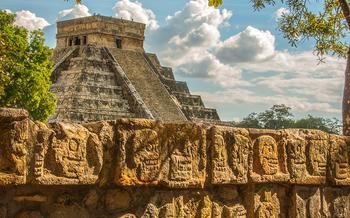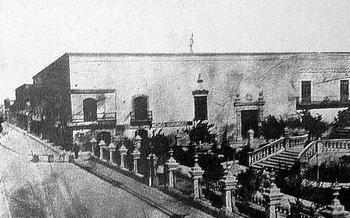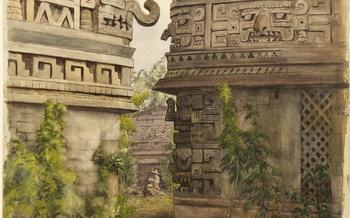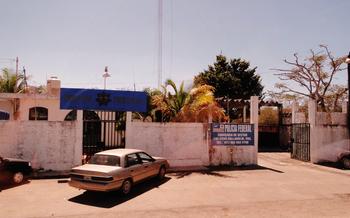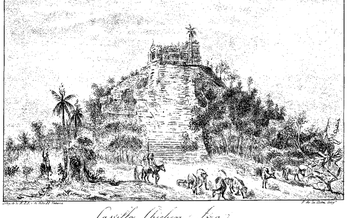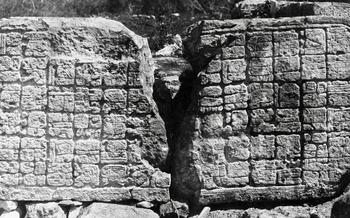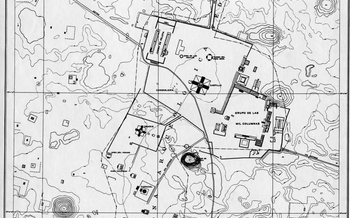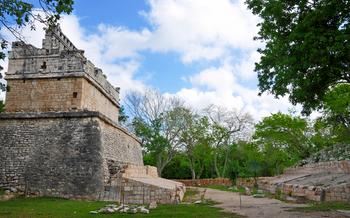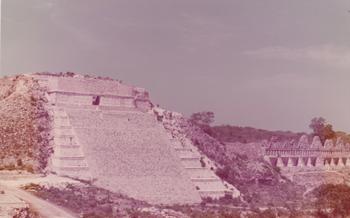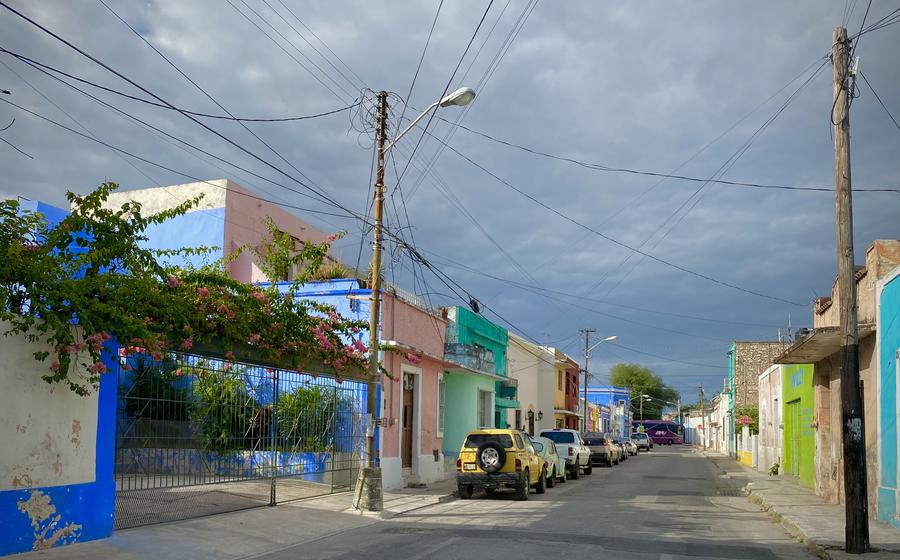
Cenote San Felipe
- Cenote San Felipe: A Hidden Gem in Yucatan
- Natural Beauty and Enchanting Atmosphere:
- Swimming and Snorkeling Paradise
- Ancient Maya Rituals and Beliefs:
- Exploring the Underground River
- My Personal Experience:
- Guided Tours and Local Guides:
- Cenote Etiquette and Safety Measures:
- Planning Your Visit:
- Local Cuisine and Dining Options
- Accommodations and Nearby Hotels
- Cultural Experiences and Local Traditions
- Off-the-Beaten-Path Adventures
- Photography and Capturing Memories:
Cenote San Felipe: A Hidden Gem in Yucatan
In the heart of the Yucatan Peninsula, nestled amidst lush vegetation and ancient Maya ruins, lies a hidden gem waiting to be discovered - Cenote San Felipe. This awe-inspiring natural wonder is a testament to the region's rich history, cultural significance, and breathtaking beauty.
Cenote San Felipe's origins can be traced back to the formation of the Yucatan Peninsula millions of years ago. As the limestone bedrock dissolved over time, a vast network of underground rivers and chambers was created, resulting in the formation of this unique and captivating cenote.
Located near the town of Valladolid, Cenote San Felipe is easily accessible by car or guided tour. Its proximity to other popular tourist destinations, such as Chichen Itza and Ek Balam, makes it an ideal stop for travelers seeking an immersive cultural and natural experience.
To the ancient Maya, cenotes were sacred places, believed to be portals to the underworld and a source of life-giving water. Cenote San Felipe held particular importance as it was a site of rituals, ceremonies, and offerings to appease the gods. The Maya believed that the cenote's crystal-clear waters were a direct connection to the underworld, and they would often perform sacrifices and leave offerings to ensure a harmonious relationship with the divine.
Natural Beauty and Enchanting Atmosphere:
The Cenote San Felipe captivates visitors with its mesmerizing natural beauty. The crystal-clear turquoise waters, akin to liquid jewels, invite you to dive into their depths. As sunlight penetrates the cenote, it dances upon the water's surface, creating a kaleidoscope of shimmering reflections. Majestic stalactites and stalagmites, sculpted by nature over millennia, adorn the cenote's walls, resembling an underground cathedral. These geological wonders, illuminated by the sun's rays, cast intricate shadows, adding to the cenote's ethereal allure.
Surrounding the cenote, lush vegetation flourishes, creating a verdant oasis. Towering trees, with their vibrant green canopies, provide shade and shelter, while delicate ferns and wildflowers add a touch of color to the landscape. The air is filled with the sweet fragrance of tropical blooms, creating an intoxicating aroma that enhances the serene ambiance of the cenote. As the sunbeams pierce through the canopy, they create magical shafts of light that dance upon the water's surface, transforming the cenote into an enchanting realm.
Swimming and Snorkeling Paradise
The crystal-clear turquoise waters of the cenote invite swimmers and snorkelers to immerse themselves in a world of tranquility and beauty. The water temperature remains refreshing and consistent year-round, providing ideal conditions for swimming and diving. A myriad of colorful fish and other marine life, from graceful rays to playful turtles, inhabit the cenote, offering a captivating underwater spectacle.
Adventurous souls can explore the cenote's intricate underwater caves and tunnels, discovering hidden chambers and formations that showcase the wonders of nature's artistry. The cenote's unique topography allows for both shallow and deep swimming areas, catering to swimmers of all skill levels.
While swimming and snorkeling, it is essential to prioritize safety. Life jackets are readily available for those who need them, and it is advisable to follow the guidelines and instructions provided by the cenote's management to ensure a safe and enjoyable experience.
Ancient Maya Rituals and Beliefs:
For the ancient Maya, cenotes were not just sources of water but sacred portals to the underworld, known as Xibalba. They held a deep spiritual significance and were considered gateways to communicate with the gods and ancestors. Rituals and ceremonies were frequently performed at the cenotes, where offerings and sacrifices were made to appease deities and seek their blessings. The Maya believed that the cenotes were inhabited by water spirits and deities, and they made offerings to ensure a harmonious relationship with these supernatural beings. These rituals were a way for the Maya to connect with the divine and seek guidance, healing, and protection. The cenotes were also believed to be a place of passage to the afterlife, and the Maya would often leave offerings for their deceased loved ones at the cenote's edge.
Exploring the Underground River
The Cenote San Felipe was not just a place of spiritual significance for the ancient Maya; it also served as a vital water source. They ingeniously utilized the cenote's underground river system to meet their water needs. Today, visitors can embark on a magical journey through these subterranean waterways, immersing themselves in the enchanting world beneath the cenote's surface.
Swimming through the underground river is an experience that blends adventure and tranquility. The cool, crystal-clear waters invite you to glide effortlessly, surrounded by the awe-inspiring beauty of the cenote's natural formations. As you navigate through the winding tunnels, you'll discover hidden chambers and stunning rock formations that seem to come alive in the gentle glow of your underwater lights.
While exploring the underground river, it's essential to respect the natural environment and the delicate ecosystem that thrives within the cenote. Avoid touching or damaging the fragile stalactites and stalagmites, and be mindful of the diverse aquatic life that calls the cenote home. By preserving the cenote's pristine condition, future generations can continue to marvel at its wonders.
My Personal Experience:
Upon arriving at Cenote San Felipe, I was immediately captivated by its ethereal beauty. The crystal-clear turquoise waters shimmered under the warm sunlight, and the lush vegetation surrounding the cenote created a serene and tranquil atmosphere. As I descended into the cenote, I was awestruck by the majestic stalactites and stalagmites that adorned its walls. The sun's rays, filtering through the openings in the canopy above, created a magical ambiance, illuminating the hidden corners of the cenote.
Stepping into the water, I felt a sense of weightlessness as I floated effortlessly. The water was crystal clear, allowing me to observe the vibrant marine life swimming gracefully around me. I marveled at the intricate underwater caves and tunnels, beckoning me to explore their depths. It was a truly magical and exhilarating experience, unlike anything I had ever encountered before.
As I swam and snorkeled through the cenote, I couldn't help but feel a deep connection to the ancient Maya who had once revered this sacred place. The cenote's pristine beauty and tranquility instilled a sense of awe and wonder within me, leaving an unforgettable imprint on my soul.
Guided Tours and Local Guides:
Venturing into the depths of the cenote can be an enriching experience with the guidance of experienced locals. Guided tours offer a plethora of benefits, including the insights of knowledgeable guides who share their wealth of information about the cenote's history, geology, and cultural significance. These experts ensure your safety by providing necessary equipment and adhering to safety protocols, allowing you to fully immerse yourself in the wonders of the cenote.
When selecting a tour operator, opt for reputable companies that prioritize safety, sustainability, and cultural sensitivity. Read reviews, inquire about their practices, and ensure they align with your values. Booking a guided tour not only enhances your experience but also supports the local economy and promotes responsible tourism.
Cenote Etiquette and Safety Measures:
Visiting the Cenote San Felipe requires adherence to specific guidelines to ensure respectful behavior and safety. When entering the cenote, appropriate swimwear and footwear are essential. Avoid touching or damaging the cenote's delicate stalactites and stalagmites, as they are irreplaceable natural formations.
For swimming and exploring, safety precautions must be taken. Cenotes can have varying depths, so assess your swimming abilities before venturing in. Life jackets or flotation devices are recommended for non-swimmers or those seeking extra buoyancy. Listen attentively to any safety instructions provided by guides or signage at the cenote.
Remember, the cenote is a natural environment, so avoid bringing food or drinks into the water to prevent contamination. Dispose of waste responsibly in designated areas to maintain the pristine beauty of the cenote. By following these guidelines, you can ensure a safe and enjoyable experience while respecting the natural wonder of the Cenote San Felipe.
Planning Your Visit:
To make the most of your visit to the Cenote San Felipe, careful planning is essential. The best time to visit is between 10 am and 1 pm when the sun is at its highest, creating breathtaking lighting conditions that illuminate the cenote's turquoise waters and enhance the visibility underwater.
Remember to pack your essentials, including swimwear, towels, reef-safe sunscreen, sunglasses, and a hat to protect yourself from the sun. Additionally, consider bringing waterproof cameras or GoPro cameras to capture the mesmerizing underwater world. Plan for a duration of at least two to three hours to fully immerse yourself in the cenote's beauty, swim, snorkel, and explore the underground river.
Facilities like changing rooms and lockers are available on-site, providing convenience and ensuring a comfortable experience. It's advisable to check the cenote's website or contact local tour operators for updated information on facilities, fees, and any special considerations before your visit.
Local Cuisine and Dining Options
Visiting Cenote San Felipe offers a unique opportunity to savor the authentic flavors of Yucatecan cuisine. Indulge in traditional dishes like cochinita pibil, a slow-roasted pork dish marinated in achiote paste and wrapped in banana leaves. Panuchos, thick tortillas filled with black beans and topped with shredded turkey or pork, are a must-try.
For seafood enthusiasts, the region offers a bounty of fresh catches. Sample ceviche, a refreshing dish made with raw fish marinated in lime juice, or savor grilled fish tacos, a local favorite.
Enjoy a delightful picnic lunch surrounded by the tranquil beauty of the cenote. Pack a basket filled with fresh fruits, homemade sandwiches, and refreshing beverages. Support local businesses by purchasing ingredients from the nearby markets, contributing to the community's economy.
As you savor the delicious cuisine, immerse yourself in the region's rich culinary traditions. Engage with friendly locals, learn about their culinary secrets, and discover the stories behind each dish. Embrace the opportunity to taste the authentic flavors of the Yucatan, creating lasting memories that go beyond the cenote's natural wonders.
Accommodations and Nearby Hotels
The Cenote San Felipe is surrounded by a variety of accommodations to suit every traveler's needs and budget. From budget-friendly guesthouses to luxurious resorts, there are options for every traveler. Many of these hotels and guesthouses offer amenities such as swimming pools, restaurants, and spas, making it easy to relax and unwind after a day of exploring the cenote. When choosing a place to stay, it's important to consider the location, as some hotels are within walking distance of the cenote, while others may require a short drive. It's also a good idea to book your stay in advance, especially during peak season, to ensure you have a place to stay.
Here are some tips for choosing a hotel or guesthouse near the Cenote San Felipe:
- Consider your budget: There is a wide range of accommodations available to suit every budget.
- Choose a location that suits your needs: Some hotels are within walking distance of the cenote, while others may require a short drive.
- Look for amenities that are important to you: Many hotels and guesthouses offer amenities such as swimming pools, restaurants, and spas.
- Book your stay in advance: It's a good idea to book your stay in advance, especially during peak season.
Cultural Experiences and Local Traditions
Immerse yourself in the vibrant culture of the Yucatan Peninsula by engaging with its friendly locals, participating in traditional festivals and events, and discovering the region's rich history and heritage. Visit nearby towns and villages to witness the colorful celebrations, taste delicious local cuisine, and interact with artisans who showcase their traditional crafts. Learn about the ancient Maya civilization and their profound influence on the region's culture, art, and architecture. Attend cooking classes to learn how to prepare authentic Yucatecan dishes, or take part in traditional dance lessons to experience the rhythmic energy of the region's folklore. Embrace the warmth and hospitality of the Yucatecan people as you delve deeper into the heart and soul of this captivating destination.
Off-the-Beaten-Path Adventures
Beyond the alluring charm of Cenote San Felipe, the Yucatan Peninsula is a treasure trove of hidden gems waiting to be discovered. Venture off the beaten path and explore lesser-known cenotes that offer a serene and intimate experience. Immerse yourself in the history and culture of the region by visiting nearby archaeological sites and ancient Maya ruins, where you can marvel at the architectural wonders of a bygone era. For adrenaline enthusiasts, thrilling activities like zip-lining through the lush jungle canopy or embarking on an ATV adventure await. Embrace the opportunity to create a customized itinerary that aligns with your interests, ensuring a truly unique and unforgettable journey through the heart of the Yucatan.
Photography and Capturing Memories:
When visiting Cenote San Felipe, don't forget to bring your camera to capture the stunning beauty of this natural wonder. The crystal-clear waters, majestic stalactites and stalagmites, and lush vegetation create a picturesque backdrop for your photographs.
To make the most of your photography experience, try to visit the cenote during the early morning or late afternoon when the natural light is at its best. This will allow you to capture the vibrant colors of the water and the surrounding vegetation.
Remember to respect the cenote's environment while taking photos. Avoid using flash photography, as this can disturb the delicate ecosystem of the cenote. Instead, use natural light to your advantage and experiment with different angles to create unique and captivating shots.
Once you have captured your memories, share your experiences with the world through social media and travel blogs. Inspire others to explore the wonders of Cenote San Felipe and help preserve this natural treasure for future generations.
